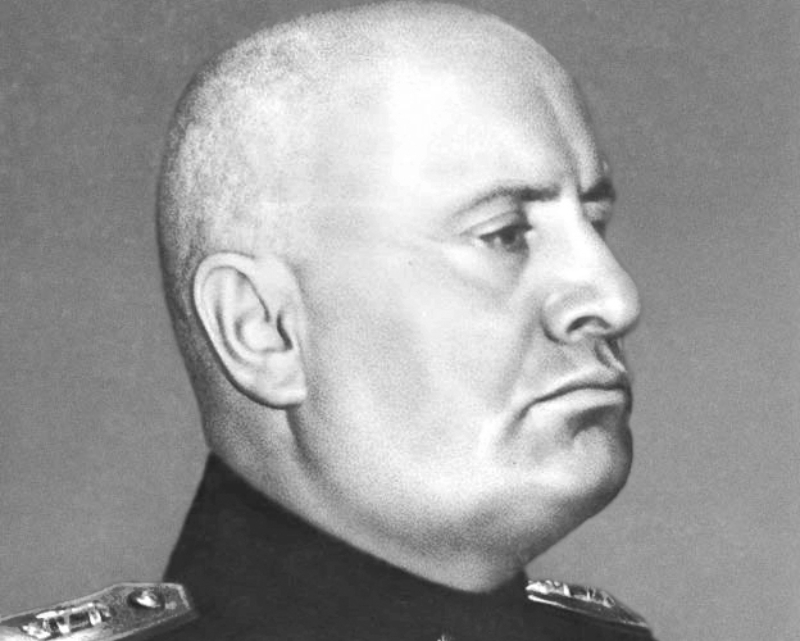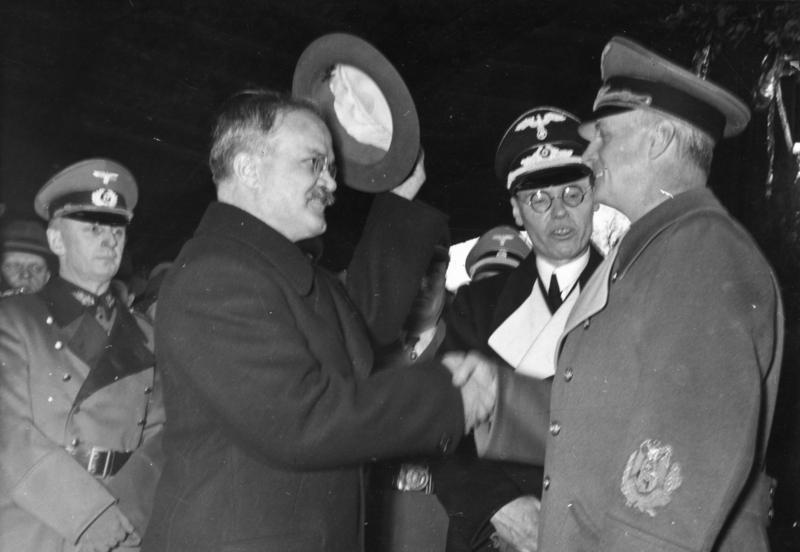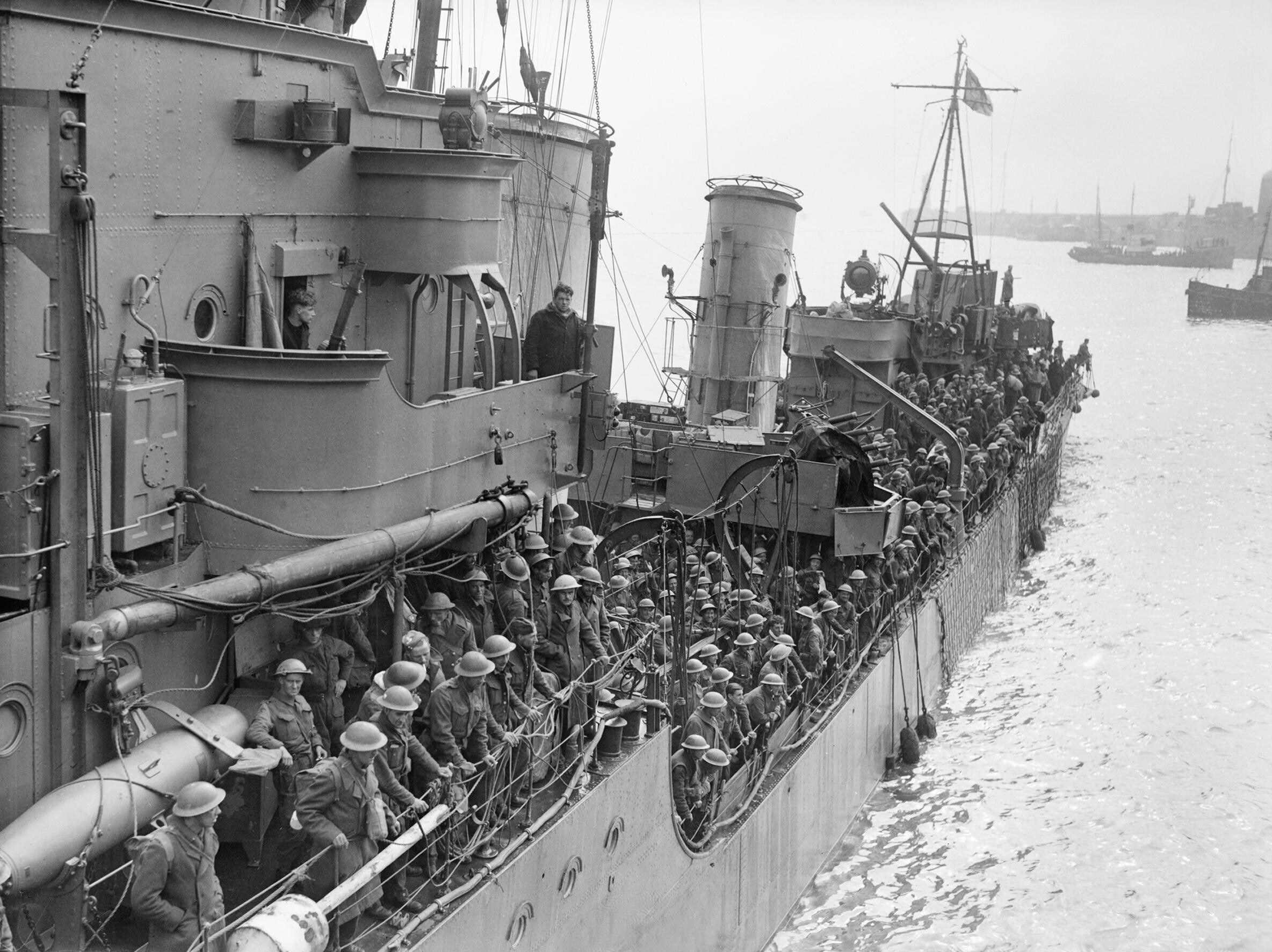Are You A History Buff? How Many Of These WWII Questions Can You Answer?
Perhaps you aced Modern History class in high school or majored in History at university—let's see how well you retained your knowledge with this ultimate World War II quiz.

On Which Date Did World War II Begin?
We'll start you off with a relatively easy one. If you got the year, we'll give you half a point.
 Hans Sönnke, Wikimedia Commons
Hans Sönnke, Wikimedia Commons
September 1, 1939
Adolf Hitler (AKA "the Führer") launched an invasion of Poland on September 1, 1939, marking the beginning of the Second World War. Although France and Great Britain didn't officially declare war until September 3rd, the 1st is generally considered to be the first day of WWII.
 Unknown Author, CC BY-SA 3.0 DE, Wikimedia Commons
Unknown Author, CC BY-SA 3.0 DE, Wikimedia Commons
What Was The Name Given To The Part Of Czechoslovakia That Hitler Annexed In October 1938?
At a conference in Munich in October, 1938, the British Prime Minister scored Hitler this part of Czechoslovakia without even consulting the Czechs.
 Unknown Author, Wikimedia Commons
Unknown Author, Wikimedia Commons
Sudetenland
The Sudetenland was a part of Czechoslovakia that the Führer wanted, as it was largely populated by ethnic Germans. At the Munich Conference in October of 1938, Neville Chamberlain and Hitler came to an agreement that Germany would annex the Sudetenland.
 Bundesarchiv, Bild, CC BY-SA 3.0 DE, Wikimedia Commons
Bundesarchiv, Bild, CC BY-SA 3.0 DE, Wikimedia Commons
What Was The Name Of Hitler's Book He Wrote While Imprisoned In 1924?
The now world-famous book was an autobiography, of sorts, and later became a manifesto that gave historians deep insight into the Führer's mind. But what was it called?
 NM Productions, World War II in Colour (2009)
NM Productions, World War II in Colour (2009)
Mein Kampf
His book, Mein Kampf was published on July 18, 1925. Bonus point if you knew the translation: "My Struggle".
 Filmdienst der NSB (producent), Wikimedia Commons
Filmdienst der NSB (producent), Wikimedia Commons
Who Was The Second British Prime Minister To Take Office During WWII?
Neville Chamberlain's policy of appeasement that failed spectacularly when Hitler invaded Poland in 1939 meant he got the boot from office pretty quickly. But who replaced him?
Sir Winston Churchill
By far one of Britain's most infamous Prime Ministers, Sir Winston Churchill took office on May 10, 1940. He is known for taking an aggressive approach to Nazi Germany and is one of Britain's great national heroes.
 William George Horton, Wikimedia Commons
William George Horton, Wikimedia Commons

History's most fascinating stories and darkest secrets, delivered to your inbox daily.
What Was The Name Of The Failed Coup Attempt Made By Hitler In 1923?
Hitler didn't just rise meteorically to power in 1938—in fact, he and the Nazis had tried to seize power in Germany before. But what was the name given to the failed coup attempt of 1923?
 NM Productions, World War II in Colour (2009)
NM Productions, World War II in Colour (2009)
The Beer Hall Putsch
Known as the Beer Hall Putsch, this large-scale protest saw thousands of Nazis descend on Munich, led by Hitler. Although the massive protest was quelled by German police, it brought Hitler to national attention in Germany. He was arrested and charged with treason and imprisoned, where he would write Mein Kampf.
 Heinrich Hoffmann, CC-BY-SA 3.0, Wikimedia Commons
Heinrich Hoffmann, CC-BY-SA 3.0, Wikimedia Commons
What Were The Two Names Given To The Opposing Sides In WWII?
A clue: They both began with the letter A.
 Pfc. William E. Poulson, Wikimedia Commons
Pfc. William E. Poulson, Wikimedia Commons
Axis & Allies
The opposing side in WWII were known as the Allied Powers—France, the United Kingdom, the Soviet Union and the United States. The Axis Powers were Nazi Germany and Fascist Italy, led by Benito Mussolini.
 Unknown Author, Wikimedia Commons
Unknown Author, Wikimedia Commons
Where Was The First Battle Of WWII?
When the Führer invaded Poland on September 1, 1945, the Polish Army bravely defended this city harbor from a German warship.
 Associated Press photographer, Wikimedia Commons
Associated Press photographer, Wikimedia Commons
Westerplatte
The city was named Westerplatte, now located in modern-day Gdansk, Poland.
 Bundesarchiv, Bild, CC BY-SA 3.0 DE, Wikimedia Commons
Bundesarchiv, Bild, CC BY-SA 3.0 DE, Wikimedia Commons
What Was The Name Given To The Soviet-German Alliance Of 1939?
The Soviet Union and Nazi Germany signed a non-aggression pact in August, 1939. But what is its most commonly-used name?
 Bundesarchiv, Bild, CC BY-SA 3.0 DE, Wikimedia Commons
Bundesarchiv, Bild, CC BY-SA 3.0 DE, Wikimedia Commons
The Molotov-Ribbentrop Pact
Officially known as the Treaty of Non-Aggression between Nazi Germany and The Soviet Socialist Republics, the Molotov-Ribbentrop Pact was signed by Soviet Foreign Minister Vyacheslav Molotov and German Foreign Minister Joachim von Ribbentrop. It would not last long...
 Bundesarchiv, Bild, CC BY-SA 3.0 DE, Wikimedia Commons
Bundesarchiv, Bild, CC BY-SA 3.0 DE, Wikimedia Commons
What Was The Name Of The Operation To Evacuate Dunkirk In May 1940?
One of the most pivotal points in the early part of the war saw thousands of Allied soldiers evacuated from the French coastal town of Dunkirk. It's one of the most famous naval rescue efforts in history, but what was it called?
 Unknown author, Wikimedia Commons
Unknown author, Wikimedia Commons
Operation Dynamo
One of Winston Churchill's first major victories as Prime Minister, the operation saw hundreds of military and civilian vessels partake in the largest naval evacuation in history and was a huge boost to British morale.
 Puttnam (Mr) and Malindine (Mr), Wikimedia Commons
Puttnam (Mr) and Malindine (Mr), Wikimedia Commons
What Event Is President Franklin D. Roosevelt Referring To When He Called It "A Day That Will Live In Infamy"?
There were plenty of infamous days during WWII—but President Roosevelt deemed this particular day as one that would "live in infamy". Which event is he referring to?
 FDR Presidential Library & Museum, Flickr
FDR Presidential Library & Museum, Flickr
The Attack On Pearl Harbor
In a surprise attack on December 7, 1941, Japanese fighter aircraft engaged the American Pacific Fleet at Pearl Harbor on Oahu Island, Hawaii. When President Roosevelt declared war on December 10th, he referred to December 7th as a "Day that would live in infamy".
What Was The Name Given To Hitler's Invasion Of The Soviet Union?
In a stunning reversal of the Molotov-Ribbentrop Pact just two years after it was signed, Adolf Hitler launched an invasion of the Soviet Union. What was the name of the operation?
 Unknown Author, Wikimedia Commons
Unknown Author, Wikimedia Commons
Operation Barbarossa
One of the ultimate betrayals of the war, Operation Barbarossa was the Führer's invasion of the Soviet, which began on June 22, 1941. It would prove to be one of the most costly mistakes of Germany's war effort.
What Was Operation Overlord?
Operation Overlord marked a turning point in the conflict—but what was it?
 Malindine, E G (Capt), Wikimedia Commons
Malindine, E G (Capt), Wikimedia Commons
The Allied Invasion Of Normandy
Otherwise known as D-Day, Operation Overlord was the codename for the Allied Invasion of the French town of Normandy. Taking place on June 6, 1944, the invasion was successful and marked a turning point on the Western Front in World War II.
 National Archives and Records Administration, Wikimedia Commons
National Archives and Records Administration, Wikimedia Commons
What Was The Longest Battle In WWII?
Many battles in WWII lasted weeks and months—but this battle lasted for five years. Which one am I referring to?
 Tomlin, H W (Lt), Wikimedia Commons
Tomlin, H W (Lt), Wikimedia Commons
The Battle Of The Atlantic
The longest continuous battle of WWII was the Battle of the Atlantic, a five-year naval battle between German U-boats and other naval assets and the British Royal Navy and her allies. The two sides fought for control over the Atlantic Ocean. The battle ended on May 8, 1945, with Germany's surrender.
 U.S. Navy photo, Wikimedia Commons
U.S. Navy photo, Wikimedia Commons
What Was The Deadliest Battle In WWII?
The total number of dead from the Second World War will never be truly calculated. Estimates are currently at unfathomably large numbers: 15 million military personnel and 38 million civilians. But what was the deadliest battle of the conflict?
 Lechner, CC BY-SA 3.0 DE, Wikimedia Commons
Lechner, CC BY-SA 3.0 DE, Wikimedia Commons
The Battle Of Stalingrad
Taking place from July 17, 1942 till February 2, 1943, the Battle of Stalingrad caused between 1.25 and 4.1 million deaths on all sides and was the result of the Nazi German invasion of the Soviet Union.
 Bundesarchiv, Bild, CC-BY-SA 3.0, Wikimedia Commons
Bundesarchiv, Bild, CC-BY-SA 3.0, Wikimedia Commons
What Is Considered The Largest Tank Battle In History?
The deployment of tanks on a large scale was something relatively new for World War II, but they soon became a key part of each side's arsenal. This led to the largest tank battle in history: The Battle of...
 Unknown Author, CC BY 4.0, Wikimedia Commons
Unknown Author, CC BY 4.0, Wikimedia Commons
The Battle Of Kursk
Taking place in southwestern Russia, the Battle of Kursk was fought between July 5, 1943 and August 23, 1943. The use of over 18,000 tanks on both sides made it the largest tank battle ever.
 Pavel Troshkin, Wikimedia Commons
Pavel Troshkin, Wikimedia Commons
What Were The Names Of The Two Japanese Cities Where The United States Dropped Atomic Bombs?
The United States launched "Operation Centerboard I" and "Operations Order No 35" on August 4 and August 5, 1945, respectively. But which two Japanese cities were their targets?
 Harold Agnew, Wikimedia Commons
Harold Agnew, Wikimedia Commons
Hiroshima And Nagasaki
On that order, Hiroshima was bombed on August 6, 1945 while the bombing of Nagasaki took place three days later, on August 9, 1945. This use of atomic weapons effectively ended WWII following the Japanese surrender on September 2, 1945.
 Unknown Author, Wikimedia Commons
Unknown Author, Wikimedia Commons
What Were The Codenames Given To Each Atomic Bomb?
Each atomic bomb deployed by the United States was given a codename. What were they? Bonus points if you know the kiloton yield.
 Pfc. Armen Shamlian, Wikimedia Commons
Pfc. Armen Shamlian, Wikimedia Commons
"Fat Man" And "Little Boy"
Little Boy was the first nuclear weapon deployed in war—dropped on Hiroshima on August 6,1945. It had a kiloton yield of 15 kilotons, equivalent to 15,000 tons of TNT. Fat Man had a yield of 21 kilotons, equivalent to 21,000 tons of TNT.
 United States Army, Wikimedia Commons
United States Army, Wikimedia Commons
On Which Dates Did World War II End?
There are two end-dates to choose from—one in each theater of war—you'll get a point if you get either one right.
May 8, 1945 & September 2, 1945
May 8th was known as "Victory In Europe Day" and marked the end of the European theater of war. Then, on September 2, 1945, the Japanese surrendered to the United States aboard the USS Levy.
 Army Signal Corps, Wikimedia Commons
Army Signal Corps, Wikimedia Commons
Let us know how many of these World War II questions you knew the answers to in the comments below!















